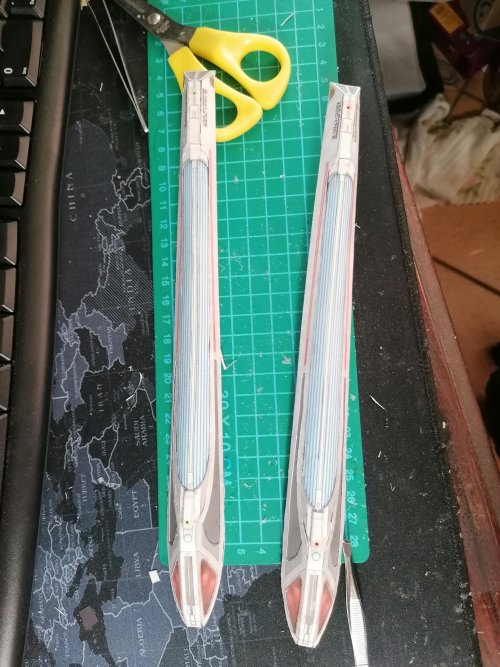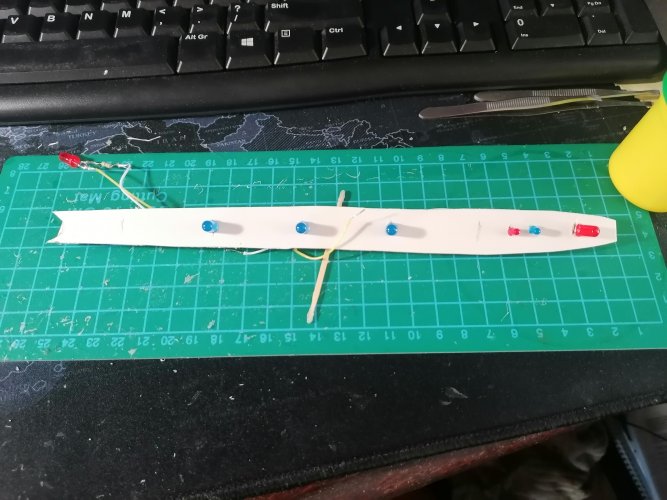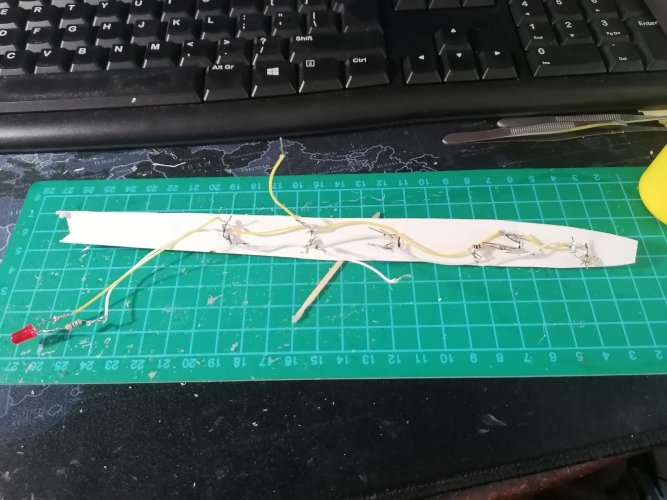Yes, please! That would be greatly appreciated!In light of the interest in LEDs in models (pun intended) maybe I'll post a short tutorial thread soon?
To be somewhat Enterprising....
- Thread starter Cybergrinder
- Start date
You are using an out of date browser. It may not display this or other websites correctly.
You should upgrade or use an alternative browser.
You should upgrade or use an alternative browser.
Excellent idea!!!Count me in maybe also the LED strips.
A thread on how to thread the LEDs - let's let it happen!In light of the interest in LEDs in models (pun intended) maybe I'll post a short tutorial thread soon?
I would really like to see a good tutorial tread on LEDs and how to implement that into paper/cardstock models.In light of the interest in LEDs in models (pun intended) maybe I'll post a short tutorial thread soon?
- Apr 5, 2013
- 13,876
- 10,216
- 228
A tutorial, with a list of the online circuit makers would be most interesting. I seriously would consider to start using copper traces in your models, and solder the short wires of the copper trace main bus lines. The series-parallel circuits you could make, hidden on of switches, would be limited only by your imagination. You use epoxy to glue the copper traces to the paper and conductive epoxy to glue the wire to the traces, then solder the wires to the LED to the LEDs. 
Thin computer ribbon wire connected to LEDs works well.Guess I'm doing the thread then@zathros , I have a but if a financial constraint at the moment so I am cannibalising old PC (USB, printer) cables so I don't know if will be able to do the tracers, but switches definitely are an option!
Also, guitar strings make excellent supports for where you cut the paper supports for LED wiring pathways.
Great Work you got going on!
OH, neat ideas. I bought a reel of magnet wire (lacquer insulated stuff) for wiring LEDs in buildings. Then of course, I immediately found a solenoid coil I had saved for the same thing. Sigh. And, I have a roll of copper tape made for edging stained glass pieces (another hobby) that would be easy to split and form concealed wiring.
What fun!
What fun!
- Apr 5, 2013
- 13,876
- 10,216
- 228
Guess I'm doing the thread then@zathros , I have a but if a financial constraint at the moment so I am cannibalising old PC (USB, printer) cables so I don't know if will be able to do the tracers, but switches definitely are an option!
I used to make traces by stripping lampshade cord, and pressing it flat, then gluing it to paper, or whatever it was I was building. The glue insulated it, and I left the ends open to solder onto. For heavier traces, I used pieces of telephone wire I'd mooch off of company trucks (much harder to do these days) but you can make some heavy duty traces that way. A metal dowel will flatten them easily. I did this when making projects in electronics school, hiding some traces under paint, and the other students could never figure out the simple test boxes I made worked.
Quick tip: If you need a special colour you can paint the LEDs with transparent paint. 
Brilliant idea!Quick tip: If you need a special colour you can paint the LEDs with transparent paint.
I tried that, ended up with brush strokes on the LED and gave a distorted light. On that thought, the bussard collectors on the TOS ships....
Oh! Maybe if you dilute the colour and apply several thin layers?
There is a special paint called "Tauchlack" in Germany. You dip the LED into the colour and let superfluous colour drop off. Due to the special nature of the colour you'll end up with a thin layer of paint without visible brush strokes. The paint is available in opaque and transparent versions.
There is a special paint called "Tauchlack" in Germany. You dip the LED into the colour and let superfluous colour drop off. Due to the special nature of the colour you'll end up with a thin layer of paint without visible brush strokes. The paint is available in opaque and transparent versions.
Sounds like a paint I'd like to get my hands on.Oh! Maybe if you dilute the colour and apply several thin layers?
There is a special paint called "Tauchlack" in Germany. You dip the LED into the colour and let superfluous colour drop off. Due to the special nature of the colour you'll end up with a thin layer of paint without visible brush strokes. The paint is available in opaque and transparent versions.
The new TEAL Christmas tree lights are a light pool water shade of blue, instead of electric blue as the standard. Also to get the effects discussed here, I have found that just going to the dollar tree and finding the color you want in a clear plastic piece, then using a white LED works too.





